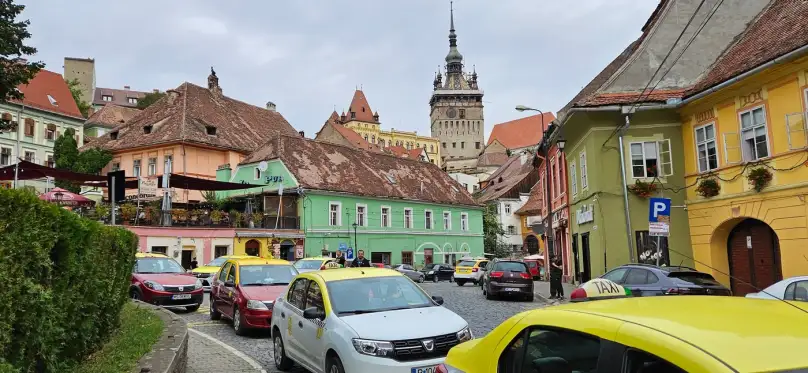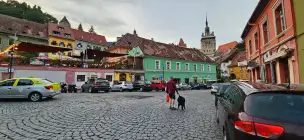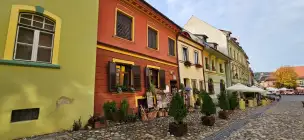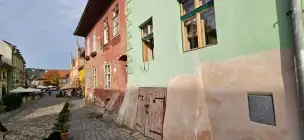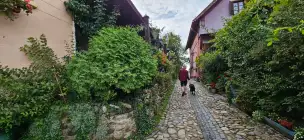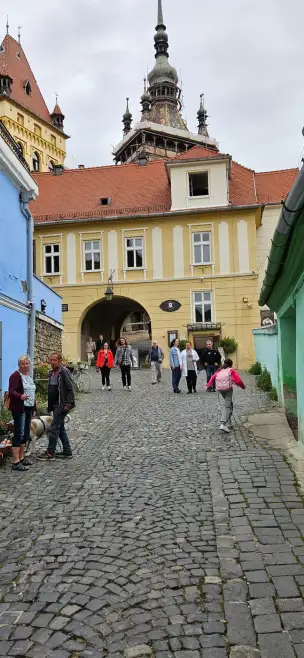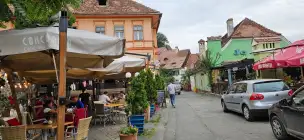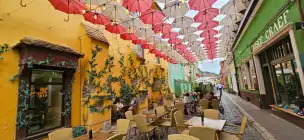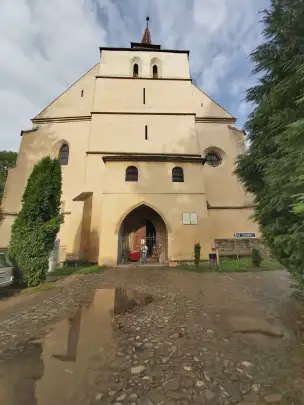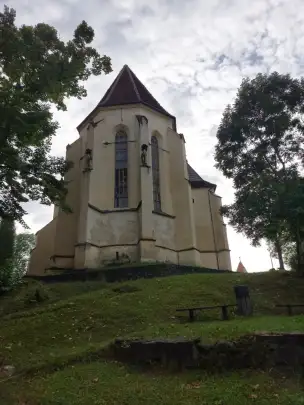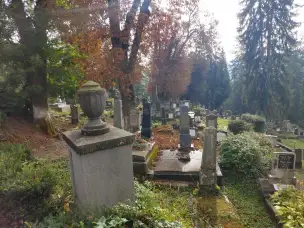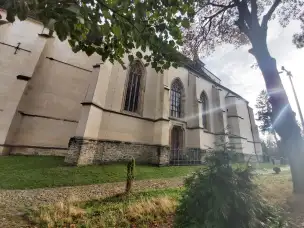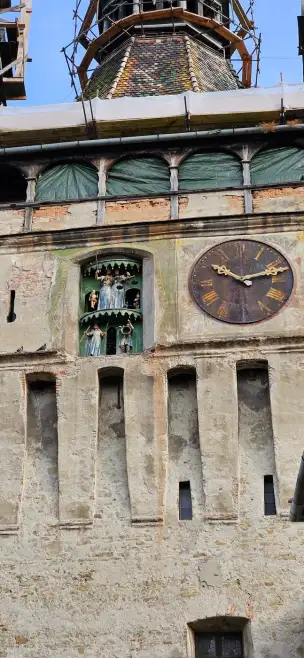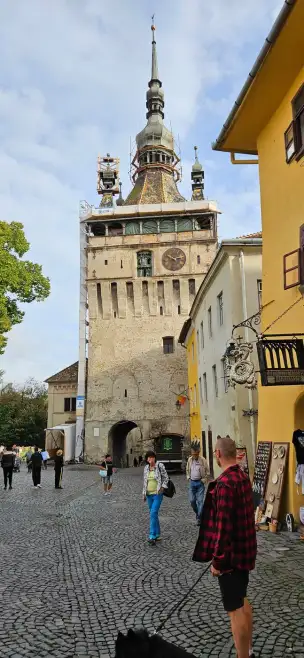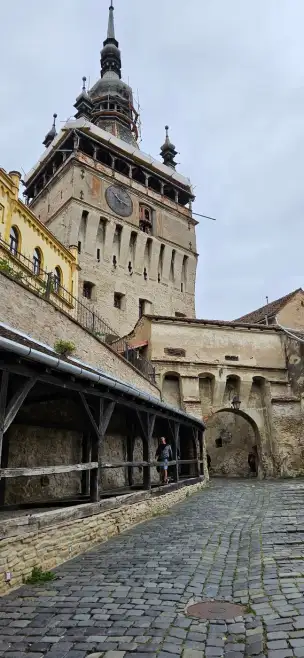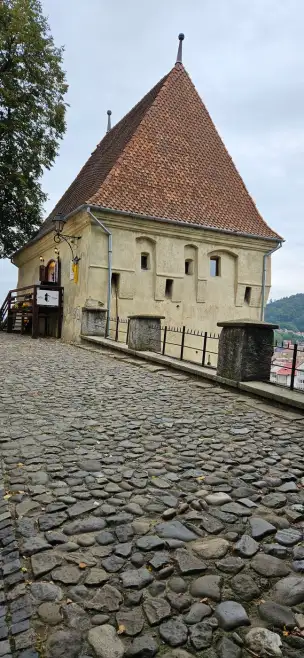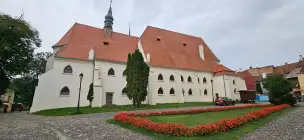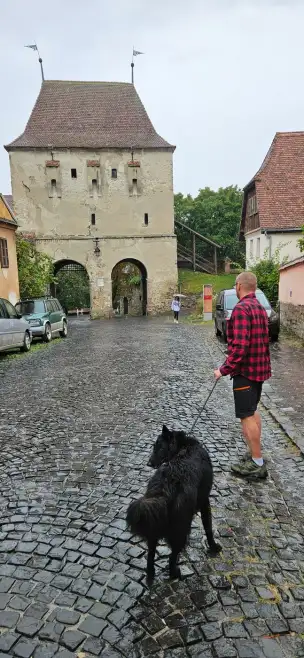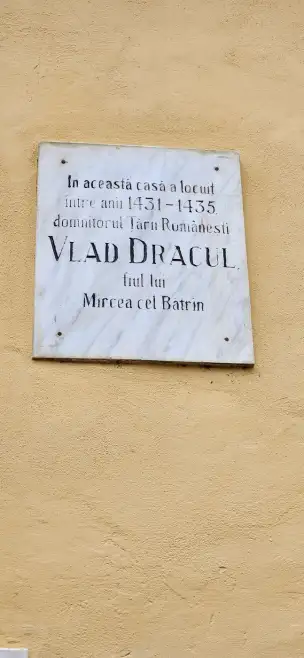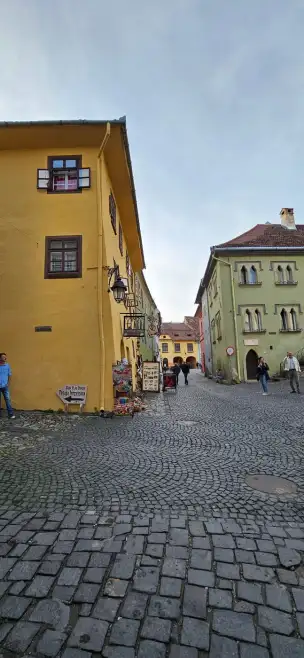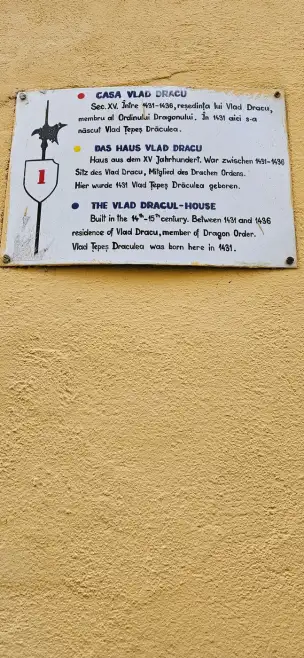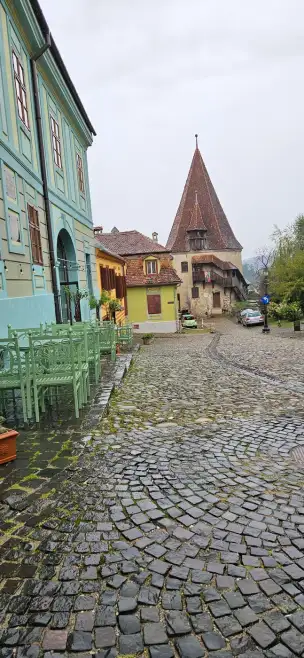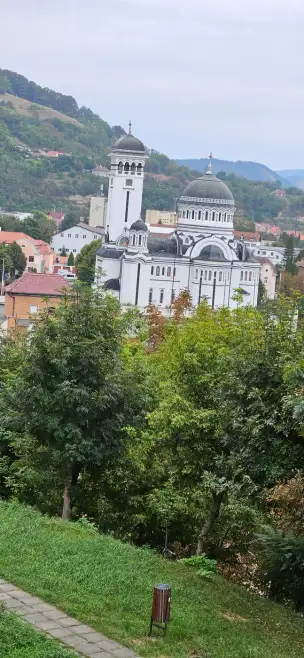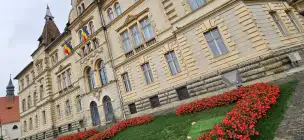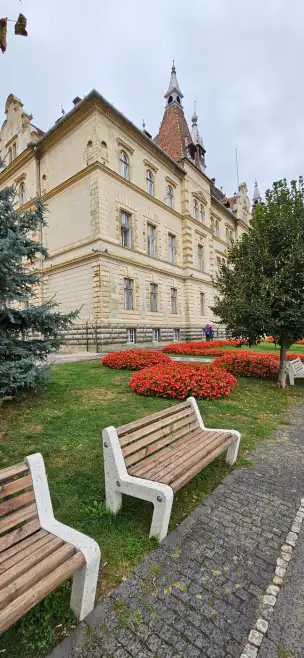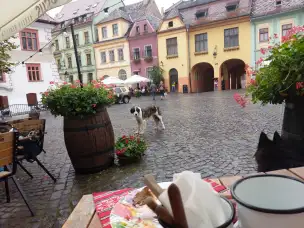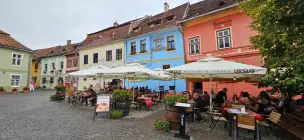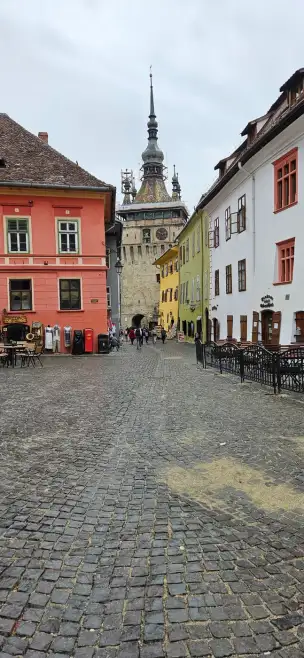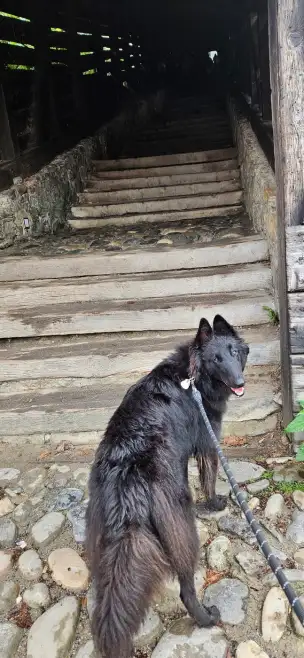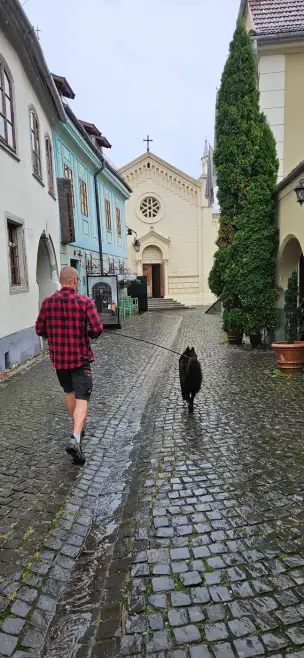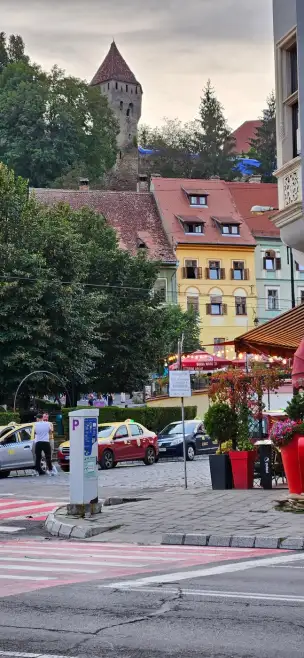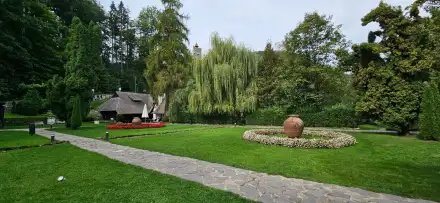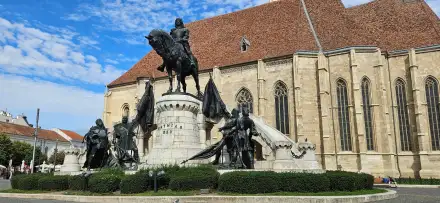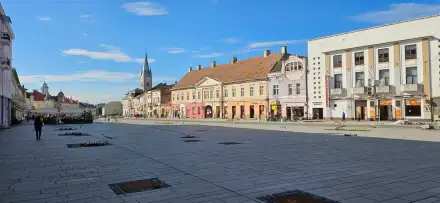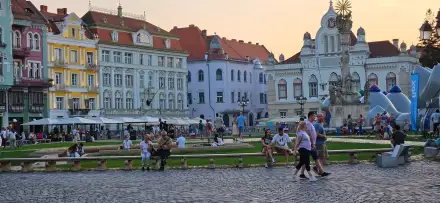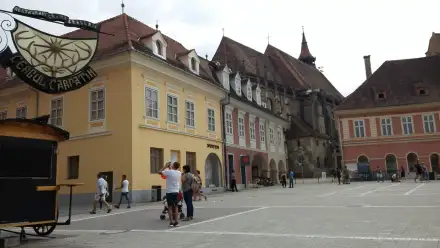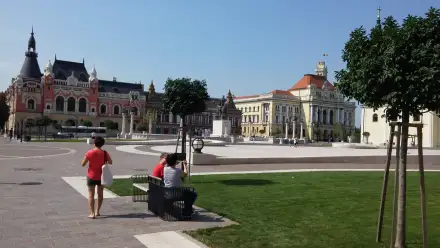The birthplace of Vlad III, also known as Prince Dracula.
Sighișoara is a charming Transylvanian town with a rich history and interesting architecture, though I personally didn’t enjoy it. That said, don’t take my opinion too seriously—perhaps I was just out of sync, and also:
- We were already exhausted after a two-week journey through Bulgaria and Romania,
- On our first day in Sighișoara, we were caught in a downpour,
- The waiters at Taverna Romaneasca looked and acted like pickpockets on a tram,
- There was no draft beer at the restaurant behind Dracula’s house,
- Their famous Clock Tower looked like it had been stored in an attic for 300 years,
- And everywhere there were those ugly overhead power lines—dirty Romanian “noodles.”
Simply put, the wind was against me… I know, I’m exaggerating. Sighișoara resembles Saxon Meissen, and although it is a bit more run-down, this actually adds to its charm.
It is a very photogenic city, full of German tourists returning to their Heimats and motorcyclists taking summer trips following in Dracula’s footsteps, so you can be sure the tourist infrastructure will not disappoint. Choosing photos to publish was difficult because they were all excellent—a rarity even in major tourist hubs like Vienna or Budapest.
Being in Transylvania, however, don’t forget to visit Cluj, Sibiu, and Timișoara.
Sighișoara is famous for its perfectly preserved historic town center, which is listed as a UNESCO World Heritage Site. The city center is full of colorful medieval buildings, charming streets, and stone defensive walls.
One of Sighișoara’s most iconic landmarks is the Clock Tower, also known as Turnul cu Ceas. Dating from the 14th century, this tower is a symbol of the city. Every hour, you can hear its bells ring and see the clock mechanism in motion.
Sighișoara is also associated with Vlad III, the so-called Vampire Dracula. Vlad III was born in Sighișoara, although he spent most of his life elsewhere.
Discover the best flights to Romania See current prices and promotions.
Check flights to Romania
Evangelical-Augsburg Church and Cemetery
The church where Gheorghe Rakoczi I was elected Prince of Transylvania and King of Hungary in 1631.
Considered the most valuable architectural monument in the city, it is the fourth largest Gothic church in Transylvania and includes a Romanesque chapel and a square tower. It has a 42-meter-high bell tower that stands out from the rest of the building and leans slightly to the south. Beneath the choir is the only known crypt in Transylvania, containing graves from the 16th–18th centuries.
Turnul cu Ceas – Clock Tower
Named for its unique clock with figurines, located on the fourth floor, it is an emblematic symbol of Sighișoara. Unlike other towers built and defended by city guilds, the Clock Tower belonged to the entire community.
It is the largest of the defensive towers and served as the city hall until 1575, then as a court, and today houses the Historical Museum, open since 1899.
Turnul Fierarilor – Ironworkers` Tower
Built in 1631, the Ironworkers’ Tower in Sighișoara is part of the UNESCO World Heritage Site.
It served the local blacksmiths who worked in the citadel. Today, it houses a permanent exhibition called the “Dracula Gallery.”
Biserica Mănăstirii – Monastery Church
One of the oldest monuments in Sighișoara, dating back to 1298, originally serving Dominican monks. Today it houses the Evangelical-Lutheran Church within the citadel.
Between 1484 and 1515, it was extensively rebuilt, following the hall church architectural style.
The church altar, created in 1680, is Baroque and was carved by Johann West.
Turnul Croitorilor – Tailors` Tower
The Tailors’ Tower was the headquarters of one of the wealthiest guilds. Built in the 14th–15th centuries, it was also known as the “Back Gate Tower,” as it guarded the secondary entrance to the medieval citadel. In fact, it is located on the opposite side of the citadel from the Clock Tower.
Originally, both towers (Clock and Tailors’) were identical, with vaulted passages and grated gates at both ends. However, in 1676, a major fire swept through Sighișoara, destroying many buildings and several towers. The Tailors’ Tower suffered especially because it stored the city’s gunpowder reserves, along with wheat and a large amount of weapons.
Vlad Dracula`s House
Vlad Dracula’s House in Sighișoara is located between the Citadel Square and the Clock Tower. It is said to be the birthplace of Vlad III the Impaler (Tepes) in 1431, the historical figure who inspired Bram Stoker’s Dracula. His father, Vlad Dracul, ruler of Wallachia, and his pregnant wife stayed in this house while the mayor of Sighișoara governed the town during the Ottoman invasion of Wallachia (1431–1435).
Turnul Cizmarilor – Shoemakers` Tower
The Shoemakers’ Tower is located in the northeastern part of Sighișoara’s citadel. The building has Baroque architectural influences. Despite its modest height, the tower is interesting because of its pentagonal layout. Its roof features two small, elegant observation towers, one facing southeast and the other northwest.
The current tower was built in 1681 on the site of a previous destroyed tower. The earliest documents mentioning the old tower date back to 1522. The tower once stored a large amount of gunpowder, which is why the 1676 fire completely destroyed it.
Holy Trinity Cathedral in Sighișoara
The Holy Trinity Church in Sighișoara is located on the northern bank of the Târnava Mare River in Sighișoara, Romania.
Although it is not strictly a cathedral—being the seat of a dean rather than a bishop—it is commonly known by this name.
Sighișoara Town Hall
The building was constructed between 1887 and 1888.
On the upper floor is a Baroque hall where the Academic Music Festival takes place, along with many other concerts by prestigious ensembles.
Piaţa Cetăţii – Citadel Square
Also called the Castle Square, it is the heart of old Sighișoara. It was the site of markets, craft fairs, public executions, impalements, and witch trials.
Scara Acoperită – Covered Stairs in Sighișoara
Known as the Scholars’ Stairs or Students’ Stairs, they were built in 1849. They lead to the Joseph Haltrich High School and the Evangelical-Augsburg Church and Cemetery.
St. Joseph Roman Catholic Cathedral in Sighișoara
The Roman Catholic Cathedral of St. Joseph was built in 1894, after the demolition of the Franciscan monastery and the Locksmiths’ Tower. It is still located in the northeastern part of the citadel, near the defensive walls. The building, designed in a Neoclassical style, reflects the architectural traditions of northern Italy.
Turnul Cositorarilor – Tinsmiths` Tower
One of the nine towers in Sighișoara’s citadel and among the most distinctive in appearance. Together with the Clock Tower, the Tinsmiths’ Tower occupies a key defensive position.



